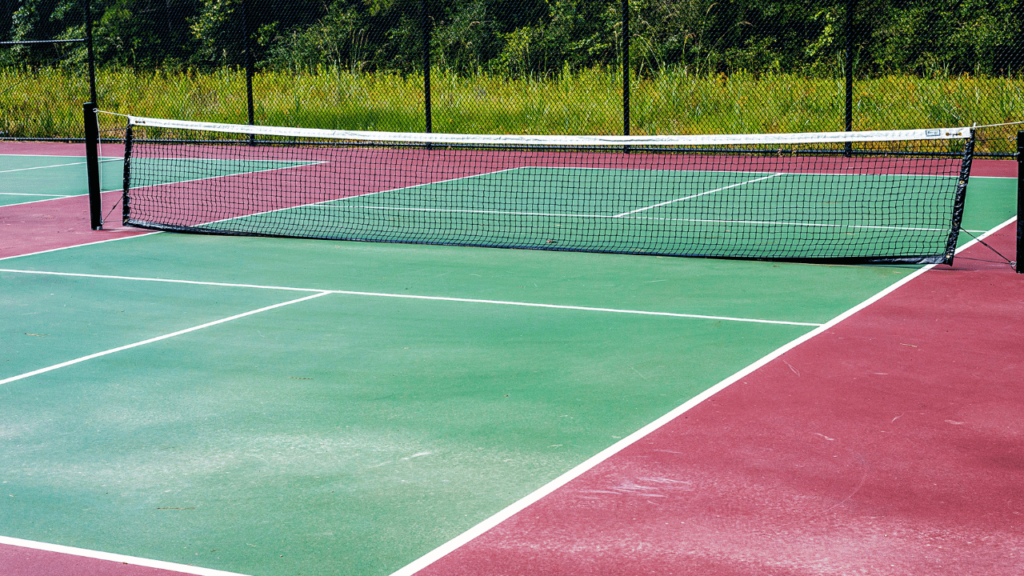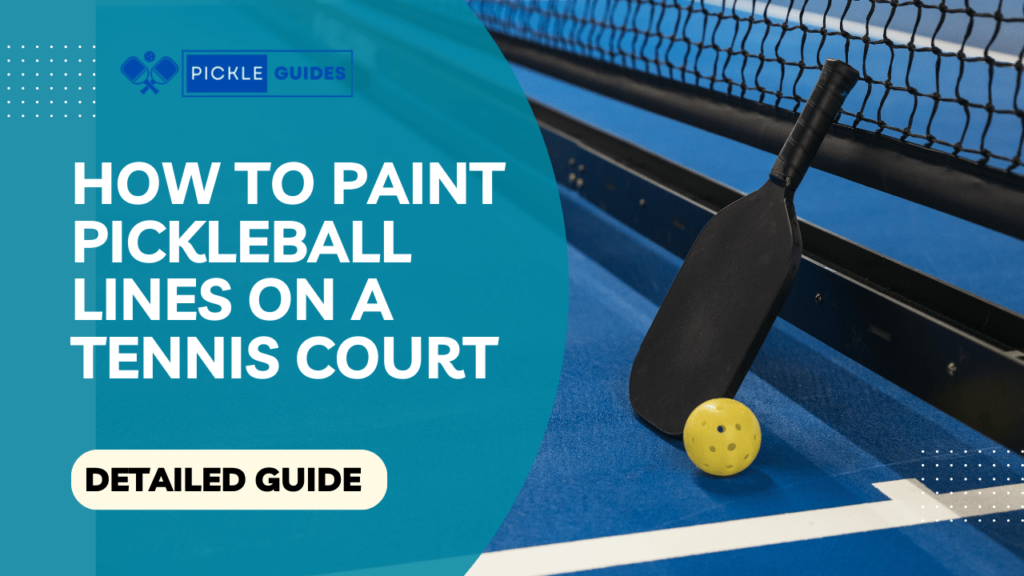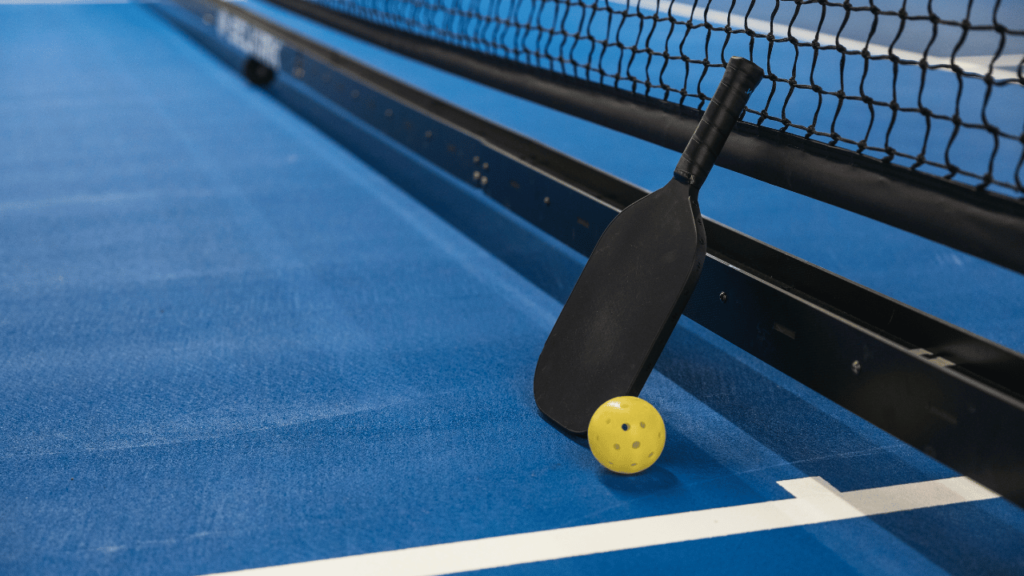Pickleball, a delightful fusion of tennis, badminton, and ping-pong, has been gaining immense popularity in recent years.
Played on a modified tennis court, the proper marking of pickleball lines is crucial to ensure a safe and enjoyable gameplay experience for players of all skill levels.
In this comprehensive guide, we will walk you through the process of painting pickleball lines on a tennis court, providing valuable insights and expert tips for creating a professional-grade court.
1. Setting the Stage: The Growing Popularity of Pickleball
Pickleball has taken the sports world by storm, attracting players of all ages due to its accessibility and exciting gameplay. This unique blend of tennis, badminton, and ping pong has captivated the hearts of enthusiasts, leading to an increased demand for dedicated pickleball courts. In this article, we will focus on the process of painting pickleball lines on a tennis court, transforming it into a multi-functional sports space.
2. The Importance of Properly Painted Pickleball Lines
While it may seem like a simple task, painting pickleball lines requires precision and attention to detail. Accurately painted lines not only ensure fair play but also add a professional touch to the court, enhancing the overall experience for players. By following the right techniques and using the correct materials, you can achieve a smooth, visually appealing surface for pickleball enthusiasts to enjoy.
Section 1: Preparing the Tennis Court

Evaluating the Tennis Court Surface
Before diving into the painting process, assess the condition of the tennis court. Look for cracks, uneven surfaces, or other damages that may affect the painting process or compromise the court’s integrity. Proper evaluation ensures that the court is in suitable condition for the transformation.
Cleaning and Repairing the Court
Thoroughly clean the tennis court surface to remove dirt, debris, and any loose materials. Repair any cracks or damages using suitable materials to create a smooth canvas for the pickleball lines.
Selecting the Right Paint
Choosing the right paint is crucial for a long-lasting and vibrant finish. Opt for high-quality, non-slip paint specifically designed for outdoor sports surfaces. This ensures durability and safety for players during the game.
Section 2: Marking the Court
Measuring and Marking the Court Dimensions
Accurate measurements are the foundation of a well-marked pickleball court. Use measuring tapes and chalk lines to mark the court’s dimensions, ensuring it aligns perfectly with official pickleball court size guidelines.
Identifying the Centerline and Baseline
Mark the centerline and baseline, dividing the court into equal halves and defining the service areas. Precise marking ensures a balanced and fair playing field.
Placing the Service Line and Non-Volley Zone
Carefully mark the service line and non-volley zone (NVZ) to meet the official requirements. The NVZ is a critical area around the net that has specific rules for player positioning during serves and volleys.
Creating the Sidelines and Baseline Extensions
Complete the court’s layout by marking the sidelines and baseline extensions. These lines define the boundaries of the playing area and contribute to the court’s overall aesthetic.
Section 3: Applying the Paint
Table: Recommended Paint Colors
| Area | Paint Color |
| Lines | White |
| Non-Volley Zone (NVZ) | Light Blue |
| Service Area | Green or Blue |
Preparing the Paint for Application
Follow the manufacturer’s instructions to prepare the paint for application. This may involve mixing different colors or diluting the paint to achieve the desired consistency.
Using the Right Tools for the Job
Choose the appropriate tools for painting, such as rollers, brushes, or spray equipment. Each tool offers unique benefits, and selecting the right one can significantly impact the final result.
Painting the Base Coats and Colors
Apply the base coats, typically starting with the lightest color. Once the base coats have dried, carefully add the colored lines, ensuring they are straight and evenly spaced.
Achieving Clean and Straight Lines
Achieving crisp and straight lines requires patience and a steady hand. Consider using painter’s tape to create clean edges, especially for intricate sections like the NVZ.
Adding Finishing Touches
Review the painted lines for any imperfections and make any necessary touch-ups. A well-finished court contributes to a positive playing experience.
Section 4: Ensuring Durability and Longevity

Allowing the Paint to Cure Properly
Patience is key after completing the painting process. Allow the paint to cure thoroughly before allowing players on the court. This ensures the paint adheres properly and lasts for an extended period.
Regular Maintenance for Extended Court Life
To preserve the quality and appearance of the pickleball court, conduct regular maintenance, such as cleaning and minor touch-ups. This ensures a safe and enjoyable environment for players over the years.
Table: Maintenance Schedule
| Maintenance Task | Frequency |
| Regular Cleaning | Weekly |
| Minor Touch-ups and Repairs | As Needed |
| Repainting the Court Lines | Every 2-3 Years |
| Full Repainting of the Court Surface | Every 4-5 Years |
Table 4: Safety Guidelines
| Safety Measure | Importance |
| Proper Footwear | Critical |
| Non-Volley Zone Rules | Essential |
| Avoiding Running on the Court | Important |
Table: Types of Paint for Painting Pickleball Lines
| Paint Type | Description | Pros | Cons |
| Acrylic Court Paint | Water-based paint with acrylic binder, designed for outdoor sports surfaces. | – Durable and weather-resistant. | – Relatively expensive. |
| Latex Court Paint | Water-based paint with latex binder, suitable for both indoor and outdoor use. | – Quick drying and easy to apply. | – May require more frequent repainting. |
| Polyurethane Court Paint | Solvent-based paint with polyurethane binder, known for its high durability and gloss finish. | – Long-lasting and highly resilient. | – Strong odor during application. |
| Epoxy Court Paint | Two-part system (resin and hardener) that forms a strong, chemical-resistant surface when cured. | – Extremely durable and abrasion-resistant. | – Requires careful mixing and handling. |
| Enamel Court Paint | Oil-based paint with a glossy finish, suitable for various sports surfaces. | – Provides a smooth and glossy appearance. | – Longer drying time compared to others. |
FAQs:
1. How do you put pickleball lines on a tennis court?
To put pickleball lines on a tennis court, first, clean and prepare the court surface. Measure and mark the court dimensions accurately using measuring tapes and chalk lines. Identify and mark the centerline, baseline, service line, and non-volley zone (NVZ) based on official pickleball court size guidelines. Once the layout is marked, use high-quality, non-slip paint designed for outdoor sports surfaces to paint the pickleball lines.
2. How do you paint a pickleball court line?
To paint a pickleball court line, follow these steps:
- Clean and prepare the tennis court surface.
- Measure and mark the court dimensions accurately.
- Use painter’s tape or stencils to create clean edges for the lines.
- Apply the base coats, typically starting with the lightest color.
- Allow the base coats to dry before adding the colored lines.
- Use brushes, rollers, or spray equipment to apply the paint evenly and precisely.
- Let the paint dry and cure completely before allowing players on the court.
3. What paint to use for tennis court lines?
For tennis court lines, it is essential to use high-quality acrylic latex paint specifically designed for outdoor sports surfaces. This type of paint offers excellent durability, weather resistance, and non-slip properties, making it ideal for the wear and tear of tennis play.
4. What kind of paint do you use for a pickleball court?
For a pickleball court, use the same type of high-quality acrylic latex paint used for tennis court lines. This type of paint provides the necessary durability and non-slip characteristics needed for pickleball play as well.
5. How do you draw lines on a tennis court?
Drawing lines on a tennis court involves measuring and marking the court’s dimensions accurately using measuring tapes and chalk lines. For precise and clean lines, you can use painter’s tape or stencils to create well-defined edges before applying the paint.
6. Can you use a roller to paint a tennis court?
Yes, you can use a roller to paint a tennis court, especially for larger areas. Rollers can be effective for applying base coats or larger sections of the court. However, for more intricate lines or smaller areas, using brushes may provide better control and precision.
7. Can you spray paint a tennis court?
Spray painting a tennis court is not recommended, as it can be challenging to achieve clean and accurate lines. Spray paint might also create uneven coverage, leading to an inferior finish. It is best to use brushes or rollers for better control and results.
8. What is the best tennis court paint?
The best tennis court paint is high-quality acrylic latex paint formulated specifically for outdoor sports surfaces. It should offer durability, weather resistance, non-slip properties, and vibrant colors to enhance the playing experience.
9. How do you paint good lines?
To paint good lines, ensure you have clean and accurate markings before painting. Use painter’s tape or stencils to create well-defined edges, and select the appropriate tools like brushes or rollers for the task. Take your time, work carefully, and allow the paint to dry and cure properly for a professional and long-lasting result.
Conclusion
With this comprehensive guide, you now have the knowledge and confidence to paint pickleball lines on a tennis court.
By carefully following the steps and using the right materials, you can create a professional-grade pickleball court that promises hours of excitement and fun for players of all levels.



